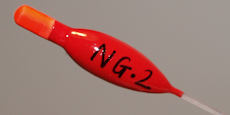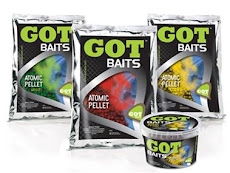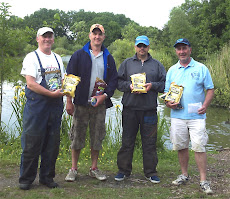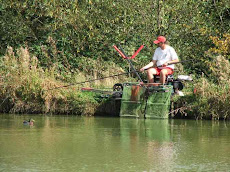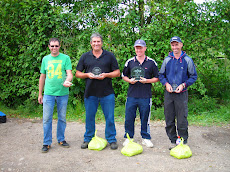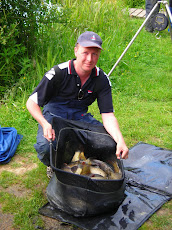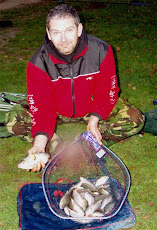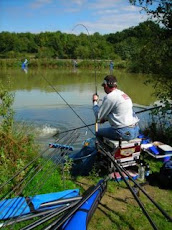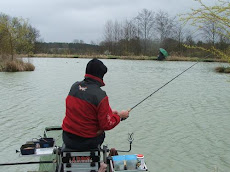I thought I would write this article to document my first year of modern shallow fishing, open up some of my findings to general debate and also perhaps to offer help to anyone who hasn’t tried shallow fishing much, so here goes:
Firstly we need to explore the principal of fishing shallow. I have heard people say that for every Carp on the surface there are 20 on the deck and therefore that is where they fish, on the deck. Contrary to popular belief however, the idea is not to target fish cruising on or near the surface. It is in fact a method to draw fish up in the water where they will compete heavily for food and pay less attention to which particle they swallow. I have fished many matches in poor conditions where I have caught better than those around me by catching at half depth or shallower and the reasons are because of the feeding pattern and finding where the fish are comfortable to feed. So let’s explore the concept of making the fish feed where you choose and then why getting them up in the water is an advantage:
Firstly, if you are good at paste fishing and enjoy the method, you will no doubt be dump feeding to keep the fish hard on the deck. This is because you do not want line bites that will waste your time, pull the hook out of the paste and result in foul hookers. You are therefore in control of where the fish feed. With shallow fishing the concept is the complete opposite and you are forcing the fish through the attraction of sound and their desire to compete for food to come up and start grabbing at anything that resembles a tasty snack. The benefits of this tactic are that you can attract fish from a wide area often poaching them from your neighbours and that you get more feedback from the swim enabling you to alter things to suit the ever changing situation.
Let me say at this point that I am not suggesting fishing shallow is better than fishing paste, there is a time and place for every method but I do feel that the majority of match anglers opt for paste because you are usually fishing on the deck and that is where they feel comfortable fishing.
Having noted the benefits of fishing shallow and the reasoning behind the method, let’s now look at 2 of the simplest styles of shallow fishing that I have concentrated on this year. Namely the pellet waggler and the pole & dibber, both of which I use on my local waters that contain a large head of small to medium sized Carp. For this reason I will focus mainly on this style of venue rather than the deeper waters that have fewer fish but larger specimens.There have been many articles written about the pellet waggler so instead of running through the basics of the method, I would like to talk more about rigs, depths and feeding.
The pellet waggler – I am a great believer in keeping things simple. I would rather have the ability to feed correctly than a complex rig and also on my local waters the fish range from 1lb – 3lb on average so I see no need for anything other than a conventional waggler style set-up. I will therefore use either a styro or balsa waggler (both un-loaded) that is short and dumpy and just large enough to chuck at whatever range you can fire pellets. Normally a 3AAA or 4AAA float will be fine as I mainly use 6mm hard pellets but I also carry 5AAA and 6AAA for windy days and 8mm pellets.There has been much hype about styro-foam as being the best material however, I have compared them to hand made balsa models (both made by Nick Gilbert) and we concur that neither dives more than the other and the flight is very similar so long as the grade of balsa used is the lightest and most buoyant.

There are other styles of float that I will occasionally use including loaded Puddle Chuckers and thick Carp wagglers both made by Drennan. You are best to glue the base of the float into the plastic peg as they can come flying off but these floats can help in strong wind or deeper water.The styro and balsa wagglers are fitted using a float adaptor although the style with a hole in the silicon base can split with loaded floats so I also carry the type with a swivel and silicon sleeve. Shotting is simple with a bulk around the float with heavier shot closest to the float and smaller shot either side to help secure them. A typical arrangement for a 4AAA waggler would be 1 AAA either side and 2BB either side of those giving a total of 2 AAA and 4BB which equates to 4AAA. The smaller shot are easier to move and have less chance of pinging off the line plus using more shot helps to create more of a ‘slap’ on the surface.
Reel line for me is simply one of the cheap bulk lines you can get like Mr. Crappie, Sundridge Force or Mullarkeys own brand. They tend to be more of a floating line than a sinking line which helps and they are reliable and strong. I will usually use 3lb but may go up to 4lb for larger fish. If you can’t land a bonus 8lb Carp on 3lb or 4lb line in open water then something is wrong! For hook lengths I use Fox Micro in 0.14 – 0.18 and usually 6” in length.I have tried a few hook patterns, most of which have ended up in the bin with only the Drennan Carp Match surviving. I find the Drennans bump far less fish on the strike and you lose far less through hook pulls. These have a 3.2mm Gardner pellet band tied into a small loop and hair rigged to them. I use 2 lengths of hair that allow either a 6mm or 8mm pellet to be ‘a pellets’ distance below the bend. Having the band in a loop helps to prevent the hair going curly through bagging and allows the pellet to hang more naturally bellow the hook bend rather than getting misshaped and hanging half way up the shank.
Lastly, I use a very light and short rod with a nice soft through-action to cope with lunges under the tip. Most pellet waggler rods I have seen are more suited to larger fish but for 1lb – 3lb fish then my Milo ‘Steve Gardner’ Light Waggler Rods are perfect. I hear the 11’ Preston Carbonactive is also well suited. The rods are paired with TD-R 2500 reels.
Moving on to depth and feeding, the first consideration is clearly the weather and if it has been continuously warm then my rigs will be set at 6” and 12” deep (I usually have 2 rods set up). First chuck will be with the 12” rig and I will take things from there. In less than perfect conditions I will probably set up 2 rods at 12” and 24” deep as sometimes the fish prefer to hang out mid-water and often you can catch close to the surface without seeing a single Carp there all day long. The reasons for changing depths are obviously due to catch rate, foul hookers or trying to pick off larger fish. Another point to mention here is that often I am fishing up to a feature where the depth is less than in open water and in fact fishing 12” deep might only be 12” or 24” off the bottom. This depth can only hold a limited number of fish but feeding with a catty spreads the feed around and enables you to hold fish over a large area and also to be selective about where in the swim you cast.
So let’s look at feeding now in more detail: we have already established that feeding often is key here because this is fundamental to getting the fish up in the water but I am always surprised at how few anglers feed often enough. I have seen countless anglers fishing the pellet waggler and only feeding every minute or so when my definition of ‘often’ is to feed with only 5, 10 or 15 second intervals. Even when I am playing fish I will still try and maintain a frequent pattern by shoving the butt between my knees to free my hands.If conditions are hard then I will still feed often but just cut down to 3 or 4 pellets at a time where the quantity on a bagging day will be nearer to a dozen. Of course in perfect conditions the fish will respond immediately and you may not have to alter your feeding pattern for 2 or 3 hours but often this year the weather has been less than perfect and you may find that you have to feed a lot to force the fish to take notice or to come into your peg.Sometimes it does pay to stop feeding altogether and just chuck out your waggler a couple of times, it can pay dividends to also rest the swim for a while but maintain the feed rate so that the fish build their confidence again. I usually have a margin swim primed for this where it is possible to pick up some bonus lumps on paste or meat every now and then.
As well as considering what the fish are doing, you also have to consider what the anglers next to you are doing as well and if they are fishing the waggler then you need to check if they have a better or worse chuck, and a better or worse cross wind. If you know your neighbours then you can also judge how well they can fish the method and how much they are likely to feed. It would not be uncommon to need 8 pints against good shallow anglers where 6 pints might have done the job fishing next to anglers fishing alternative methods. I will always take at least 10 pints with me and expect to use at least 6.While we are talking about feeding, it is important to mention where you cast as you can often pick up bonus fish or improve bite ratio by chucking outside of the feed area or just up to the edge. Often it pays to get tight to features to maximise bites but if you can pick off the larger fish that are wiser and hang off the main feed then you don’t need to catch so many! There are some other tricks to consider if bites dry up but I will leave those for now or I will end up writing a book instead of an article.
Lastly, perhaps I should mention that when feeding, my rod is always laid across my lap and the top of a keepnet allowing an angle to cushion any takes while my hands are on the catty. I reckon on a reasonable day 25% of my fish will hook themselves and pull the rod round. In fact, I am considering training myself to feed while still holding the rod. It can’t be any harder than using a catty while holding a pole and it is just a matter of muscle memory and habit, just like the way you learn to hold a golf club properly.
The shallow pole – having enjoyed my first attempts with the pellet waggler, I soon moved onto the pole and to a certain extent I find this even more enjoyable for a number of reasons. Firstly I will usually fish it quite short (7m – 11.5m) into open water which allows you to come in or go out much more than fishing a waggler up to an island and secondly because the whole motion process of feeding and casting is quicker, smoother and easier to handle without breaking your feeding pattern.
If you saw the rigs I use then at first glance they look extremely basic but although simple in construction, they are actually precisely refined to perform exactly how I want them to. Firstly the float is not one that you can buy in the shops. I have wasted money on a number of styles of dibber only to find that they are too big, too small, too light or too fragile. I therefore sent my float-making mate a design that I felt would be much better. After testing a few prototypes we have now arrived at a design that I think is perfect. It is constructed from balsa with a short, thick glass stem to cock it down to the base of the tip but with a straight-ish tip just long enough to take two Gardner pellet bands and the weight of a 6mm or 8mm wetted pellet. The idea of the pellet bands is to avoid the use of an eye that can create tangles and pull out but also they are far less likely to be cut by the line than standard large diameter float rubbers but I use two just in case one does cut. The float is about 50mm-60mm long which is ideal and also just heavy enough to slap around.

Main line will be between 0.16 and 0.20 Fox Micro with a lower diameter hair rig hook length identical to the ones I use for the pellet waggler. Shot will be a single no.8 directly under the float to act as a ‘stop’ and also enabling me to take it off if I want to use a bit of paste or if the water becomes choppy and I need more tip showing. Lastly, I will have two lengths of rig made up on winders. Firstly a short-line rig where the float can be between 6” and 12” from the pole tip and secondly a long-line rig where the float can be between 24” and 36” from the pole tip. These rigs enable me to fish very shallow or at half depth but also they perform in two different ways. The short-line rig acts as a ‘hanging’ rig where the fish hang themselves and you simply see the elastic streaming out of your pole and the long-line rig can be used to flip the rig over the pole tip when slapping and also to keep the pole well off their heads.
Moving on to the gear on the bank, you will usually see me set up for speed unless the wind is very strong and I will have a single V roller behind me and at an angle and use the mouth of a keepnet as a pole sock. Shipping back, breaking down and freeing my hands up is made easy and the angle of the pole roller enables me to swing hooked fish away from the swim as soon as they are hooked and draw them in well away from the rest of the fish. This is a speed method on my local venues and I need to ensure that I give myself as much fishing time as possible.My bait choice will nearly always be 6mm hard pellets for feed and for the hook with 4mm a possibility on harder days. The range I can feed at by hand is fundamental to the distance I fish with this method. If I can feed at 10m with my weak hand while holding the pole with my strong hand then I will fish at about 8m allowing me to go longer if I need to follow the fish out. If I need to fish longer or if the wind turns into my face then I have learnt to flip the pole into my weak hand and feed with my strong hand swapping back only to slap the rig or to play fish. I can probably gain one or two meters extra feeding distance with my strong hand although having the pole in my weak hand is slightly less graceful, but hey, I’m in it to catch fish not look good!

Feeding is similar to the way I described for the pellet waggler although it is now possible to be more precise with accuracy and frequency. As soon as I have hooked a fish I will throw pellets on it’s head to keep the other fish busy. As soon as I have drawn the fish away from the swim I will feed again and then again when I have broken down, again when I have netted the fish, again when I have slipped the top kit back on and again before slapping the rig back in. By this time the fish have forgotten all about one of their brothers being hooked and are ready to climb up my pole.
Having talked about the ‘bagging’ side of the method, there are also days where the fishing is rock hard but a shallow approach will still beat a deck approach. A couple of times this year I have done well catching 35lb to 45lb of small Carp having fed 6 pints of pellets and catching between 12” and 24” deep in 4’ or 5’ of water. Proof that the method can force fish into feeding and you don’t have to fish on the deck to get bites.One or two other interesting points spring to mind as well. I recall an open I won at Monk lakes around June time with 114lb of Carp……a couple of Tench…… and a Barbel……all caught fishing 6” deep! It seems that getting the fish into feeding mode up in the water works on otherwise regarded ‘bottom feeders’. I also won a small match at Sam’s Lakes in Headcorn catching silvers on maggot and when I came shallow in the last hour I had a few large skimmers and proper Bream at half depth. I am sure I would not have caught these fish shallow if I wasn’t hand-feeding maggots every 5 – 10 seconds.
I am quite sure I have left out a lot of detail here and that most of the contents will be nothing new to anyone reading it but I hope that anyone who wanted to learn more about a shallow approach will benefit from this and that it may spark a few thoughts among others.
